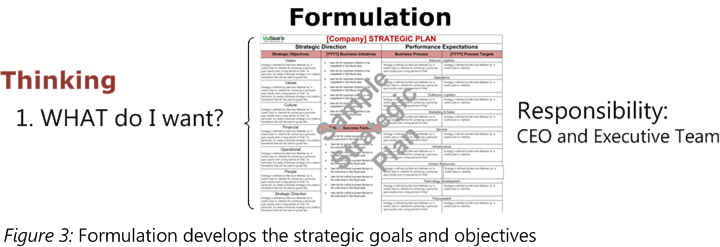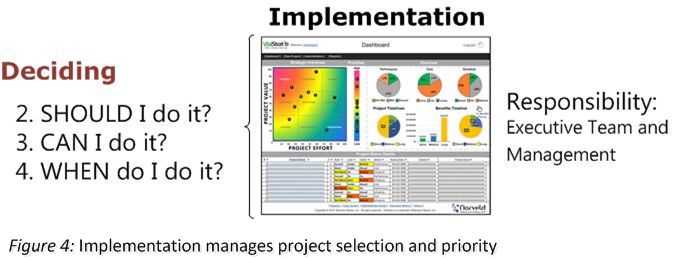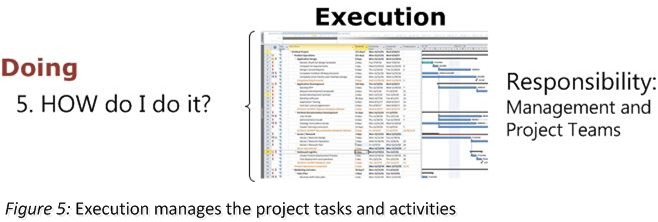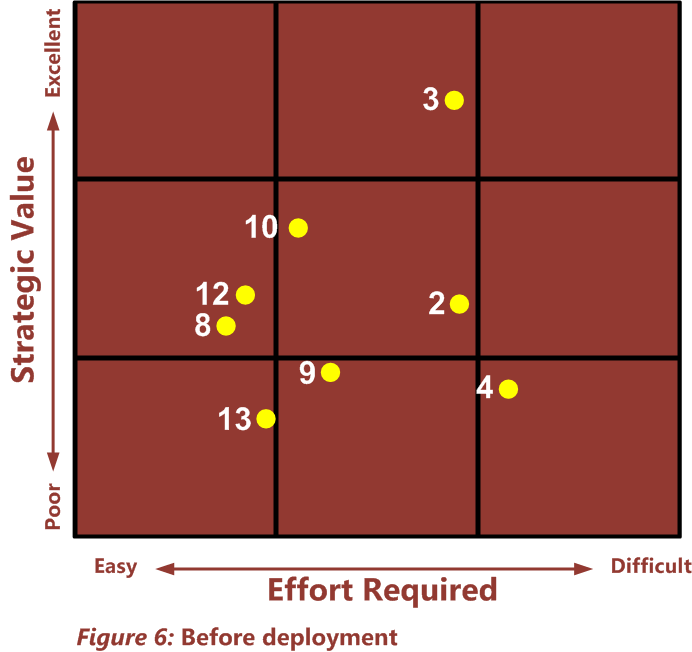
Are your projects really supporting your strategic plan?
Did you know that 60% of strategic plans fail to reach their desired outcomes?[i] Why is this failure rate so high and what can you do to make sure your strategy succeeds when so many others fail? Typically, many organizations formulate a strategic plan without a strategy implementation process. They go straight from formulation to execution with the result that many of the projects they select to execute are often not well aligned with their strategy.
I was even told a story of an executive team who dutifully revised their strategic plan every year, but regardless, their organization kept on doing the same things as if nothing had changed. Clearly, their strategic plan did not drive the organization’s activities. It’s impossible to know if the plan was a good one or not because the strategy was never executed. In this case, the strategy is nothing more than a wish.





This happens when there is nothing connecting strategy formulation with strategy execution. Without that connection, it’s easy to lose sight of what’s important. Let’s face it, most organizations have more project requests than the resources needed to get them done. This creates internal competition for project approvals which can result in good projects being left behind or worse, "pet projects" being executed that produce little to no value against the strategic plan.

Figure 1 - Dominant Player
Without a strategy implementation process that provides a predetermined, quantifiable project selection process, internal competition can lead to approvals based on personalities and politics such as a dominant player with the loudest voice. And that can have a negative influence on the organization in many ways.
Creating a strategy implementation process as part of your overall strategy management is crucial to strategy execution. This is not always easy. It can mean changing existing processes, responsibilities, policy, and even culture. It can also mean the difference between business success and failure.
Strategy Management
Strategy management incorporates three unique parts: Formulation, Implementation, and Execution. This approach keeps the project decision-making processes within the framework of the strategic plan at the appropriate organizational levels. Not understanding the importance of a distinct Implementation process can ultimately lead to failure in achieving strategic targets.

"There are meaningful distinctions between strategy, implementation, and execution that are helpful to running a company or business in the real world. Ignoring, blurring, or getting them wrong creates sloppy thinking, deciding, and doing at all levels of an organization.” Ken Favaro[i]
The distinct elements of each part of the strategy management process requires integration and allows each level of the organization to own specific responsibilities for achieving progress toward strategic targets. This integration and alignment of process and responsibility ensure that the critical questions are answered at the right time by the right people with the right information.



Organizations often don’t include or don’t separate the strategy implementation process because they fail to see or understand its value. The strategy implementation process is important because it converts the strategic plan into assessment criteria and a portfolio of proposed and approved projects that clearly demonstrates the alignment of each with the strategic plan. This process also serves as a transparent communication conduit between all the players.
Not having a complete strategy management process can allow the organization to unknowingly drift away from its strategic targets. Some organizations may claim to be incorporating all of these activities but often the tools, techniques, and applications are missing or not properly aligned with the appropriate process or resources. At best, this situation will lead to inconsistent decision making when selecting projects. At worst, it can lead to a decision making process that is polluted through various political and negative influences, such as currying of favors, appeals to authority, dominant players, and personal agendas.
Having the tools, process, policies, and culture for a clear strategy management process with a distinct strategy implementation component will allow the organization to—
- Consider different proposals for the same project and provide a quantifiable selection of the best option.
- Build a portfolio of projects that are quantifiably aligned with the organization’s resources and long-term goals.
- Determine, communicate, and monitor priorities throughout the organization.
Case Study
After seeing a presentation on strategy management, the director of corporate services for a municipal government believed his organization could benefit from its deployment. He thought the process and the implementation application would not only improve the project selection process and increase the value of the strategic portfolio, but also improve communication, reporting, and transparency.
After specific Value and Effort criteria for his organization were developed for a strategic portfolio, the application was loaded with active projects. These projects were scored, displaying their strategic value and effort as shown on the chart in figure 6.
It was easy to see that the portfolio contained some projects that either should not have been approved or that did not belong in the strategic portfolio.


Immediately following deployment of the process and application, the team challenged all new project proposals by scoring them against the assessment criteria to validate each proposal against the organization's business plan. In less than one year, the organization was not only delivering higher value projects (more closely aligned with strategy) but also taking on more projects, as shown in figure 7.
The results speak to the power of having a distinct strategy implementation process. This gave the organization the ability to select better projects, align them with strategy, and reduce negative influences, in other words - to make better decisions.
[i] Ken Favaro, “Defining Strategy, Implementation, and Execution,” Harvard Business Review. March 31, 2015. Retrieved from https://hbr.org/2015/03/defining-strategy-implementation-and-execution.
[i] Ed Barrows, “What Is Strategy Execution,” American Management Association website. Retrieved from http://www.amanet.org/training/articles/What-Is-Strategy-Execution.aspx.
Copyright © Norveld Business Systems, Inc. 2003-2025. All Rights Reserved.

